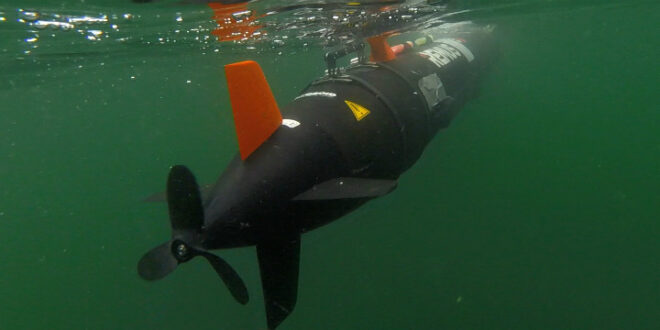Unmanned Systems
Navy’s aquatic drone plan faces operational hurdles
Unmanned, or remotely controlled vessels are undoubtedly the future for the Navy but the service will have to overcome operational and network hurdles first.
James Geurts, the assistant secretary of the Navy for research, development and acquisition, said as unmanned vehicles, both surface and undersea, become more of a majority in the Navy’s fleet the service will have to shore up supporting capabilities.
“The interesting thing in the remotely piloted or unmanned world is it’s not as huge [of] a technology issue as [it is] a concept of operations issue, and how do you take the laws of the sea for hundreds and hundreds of years built under one set of circumstances think about them in these circumstances,” Geurts said during a discussion on “Technology, policy, and leadership in 2021” with the Atlantic Council on Dec. 16.
“There are huge implications on how you deal with the manpower piece of that: how do you organize, how do you command and control all of those assets.”
The Chief of Naval Operations has been developing an unmanned campaign strategy to map out and unify warfighting concepts around the Navy’s aerial, surface, and subsurface vehicles. The strategy will also look at connecting the vehicles vis-a-vis a network and command and control, while assessing any gaps around data flow and how information can be passed at network speed rather than person-to-person.
“Everybody will focus on the [unmanned] platform but it’s going to be so much more and it will take much more to enable it,” Geurts said, noting that unmanned vehicles need means it needs a robust, resilient, and reliable network.
“It’ll seem harder than it appears at the front and then it will scale much faster than we think on the back end of it,” he said of increasing the number of unmanned vehicles. “We don’t want to be caught short still thinking about it when somebody else is scaling it.”
This article first appeared on FCW, a Defense Systems partner site.
About the Author

Lauren C. Williams is senior editor for FCW and Defense Systems, covering defense and cybersecurity.
Prior to joining FCW, Williams was the tech reporter for ThinkProgress, where she covered everything from internet culture to national security issues. In past positions, Williams covered health care, politics and crime for various publications, including The Seattle Times.
Williams graduated with a master’s in journalism from the University of Maryland, College Park and a bachelor’s in dietetics from the University of Delaware. She can be contacted at [email protected], or follow her on Twitter @lalaurenista.
Click here for previous articles by Wiliams.
https://defensesystems.com/articles/2020/12/23/navy-drones-aquatic-undersea-geurts.aspx
 Unmanned Aerial Vehicle The latest drone news
Unmanned Aerial Vehicle The latest drone news





